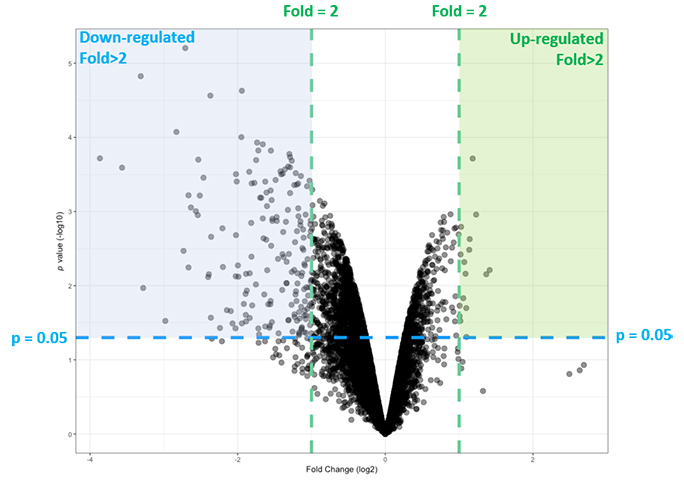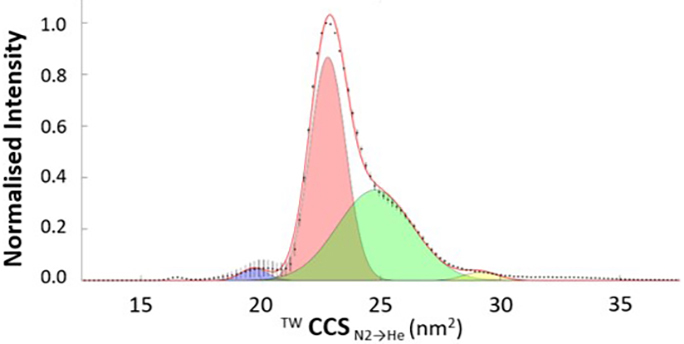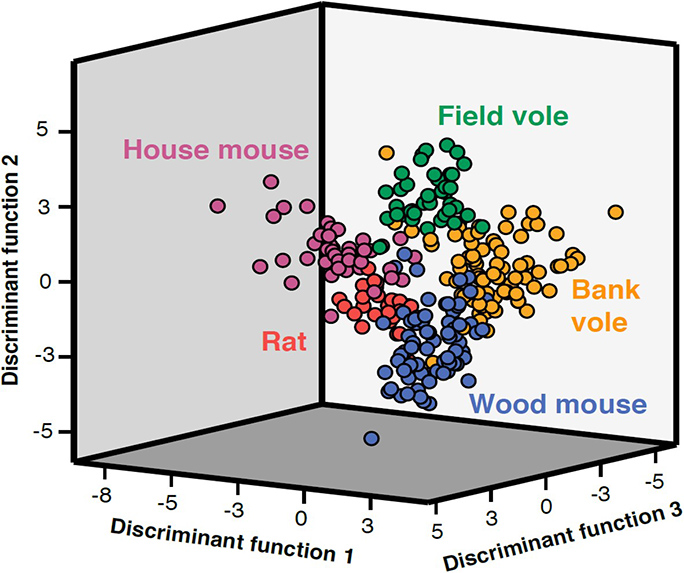Protein discovery and quantitative proteomics

Image: Quantification of protein abundances. The relative up and down regulation of each protein (each dot) from a pairwise comparison displayed in a volcano plot
The bread and butter of our service is aimed at protein identification from complex biological or clinical samples, quantifying differential expression between conditions (e.g. treatment/disease). As well as this type of relative quantification, which can be performed using label-free methods, isobaric labelling (TMT or SILAC), we also have extensive experience in absolute quantification (defining protein copy numbers per cell) using QconCAT methods.
Protein characterisation

Image: De-convoluted collisional cross sections of protein conformers in its native form
More broadly, we undertake in depth protein characterisation, either on single proteins, or from complex mixtures:
- De novo protein sequencing
- Protein identification
- Localisation of post-translational modifications
- Characterisation of protein binding partners
- Intact protein analysis.
Weird and wonderful

Image: Linear discriminate analysis of rodent faecal samples analysed by REIMS
We also have a selection of ionisation methods that widens our capabilities.
Rapid evaporative ionisation mass spectrometry (REIMS)
- Ionises unprocessed samples, used for creating spectral patterns and classifying sample types.
Matrix-assisted laser desorption ionisation
- Used for quick analysis of simple mixtures or small non-volatile molecules
- Also capable of imaging tissue sections (using our matrix sprayer and digestion station).
Desorption electrospray ionisation
- Used for the imaging of tissue sections.
Native mass spectrometry and Ion-mobility spectrometry
- Used for analysing complexes and detecting conformational effects of ligand binding.
Back to: Centre for Proteome Research (CPR)